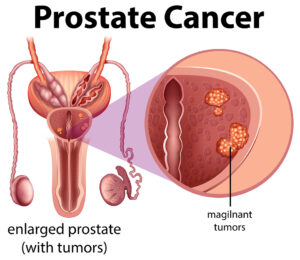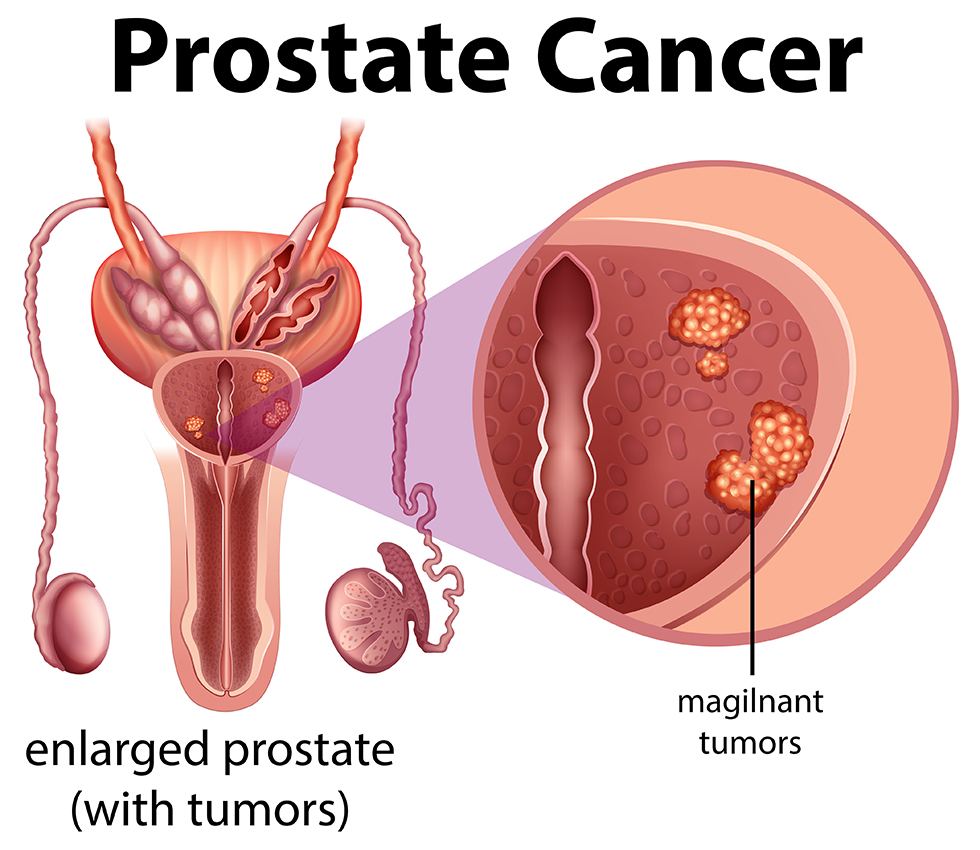Understanding Prostate Cancer
This cancer begins when cells in the prostate gland start to grow uncontrollably. The prostate is a walnut-sized gland in males that produces seminal fluid. This cancer usually develops slowly, so there may be no signs for many years. However, some prostate cancers can grow and spread quickly. Knowing the symptoms, causes, types and treatment options for it can help deal with this disease. When you feel symptoms of this cancer then you should immediately consult with oncologists in Rajkot at HCG Rajkot.

Types of Prostate Cancer
There are several types of cancer, which are classified based on their growth patterns:
- Adenocarcinoma – This is the most common type, developing in the prostate gland cells.
- Sarcoma – This rare type develops in the supportive tissue of the prostate.
- Small cell carcinoma – An aggressive cancer that can spread quickly to other organs.
- Neuroendocrine tumours – These develop from special hormone-producing cells in the prostate.
- Transitional cell carcinoma – Sporadic, develops in the prostate’s transitional cells.
- Squamous cell carcinoma – Occurs in the squamous cells of the prostate.
Symptoms of Prostate Cancer
There are often no early warning signs of it. Symptoms usually appear when the tumour causes an obstruction or presses on nearby organs.
- Frequent urination, especially at night
- Difficulty starting or stopping urination
- Weak urine flow or dribbling
- Painful urination and ejaculation
- Blood in urine or semen
- Pelvic pain or stiffness
- Erectile dysfunction
- Bone pain from spread to bones
Causes and Risk Factors
The exact causes of it are not known. However, certain factors can increase risk:
- Age: Risk rises substantially after age 50.
- Family history: Having a father or brother with prostate cancer increases risk
- Race: African-American men have a higher risk.
- Obesity: Obese men diagnosed younger and with advanced cancer.
- A diet high in calcium and fats may also play a role.
- Gene changes like mutations in BRCA1/BRCA2 genes.
- Exposure to Agent Orange.
Prostate Cancer Diagnosis
If symptoms appear, the oncologists in ahmedabad perform a digital rectal exam to check for enlargement or lumps in the prostate. A PSA blood test is also done. If either of these screenings shows abnormal results, the following tests are used:
Digital Rectal Exam
In a DRE, the doctor inserts a gloved, lubricated finger into the rectum to manually check if the prostate feels enlarged or has any abnormal lumps or hardened areas. An enlarged prostate or distinct lumps may indicate the presence of cancer. However, a normal-feeling prostate does not always rule out cancer.
PSA Blood Test
PSA is a protein made by cells in the prostate. Its levels above 4.0 ng/mL are considered high and indicate an enlarged prostate. However, prostate cancer can also occur in men with PSA less than 4.0 ng/mL. PSA levels help determine cancer risk along with other factors.
Biopsy
If either the DRE or PSA test is abnormal, a prostate biopsy is recommended. This involves extracting small pieces of tissue from different areas of the prostate using thin needles inserted through the rectum. The tissue samples are then sent to a lab for analysis. Examining the samples under a microscope can confirm the presence of cancer.
Gleason Score
The biopsy results determine a Gleason score based on how much the samples look like normal prostate or abnormal cancerous patterns. Scores range from 6 to 10 – higher scores indicate more aggressive cancer.
Imaging Tests
If cancer is confirmed, further imaging tests like CT scan, MRI, bone scan, and chest X-ray may be done to check if the cancer has spread beyond the prostate. PET scans can also help detect metastases.
TNM Staging
The stage of cancer is determined as per the TNM system – assessing tumour size and invasiveness (T), lymph node involvement (N) and metastases spread (M). This indicates how far the cancer has progressed.
Treatment Options
Treatment is based on the stage, location, Gleason score, PSA levels, and overall health.
1. Active surveillance: No immediate treatment, just regular monitoring.
2. Surgery: Radical prostatectomy removes the prostate gland.
3. Radiation therapy: External beam radiation or internal brachytherapy.
4. Hormone therapy: Drugs that lower testosterone to stop cancer growth.
5. Chemotherapy: Drugs like docetaxel kill rapidly dividing cancer cells.
6. Immunotherapy: Boosts the body’s immune system to fight cancer.
7. Cryosurgery: Freezes and kills cancerous tissues.
8. Bone-directed therapy: Medicines like denosumab for bone complications.
In advanced cancer, a combination of treatments may be used. Seeking a second opinion after diagnosis is advisable. Staying active and eating a balanced diet can also help manage this cancer. Regular follow-ups are key for monitoring after initial treatment.
You can also read: Health digital twin market

